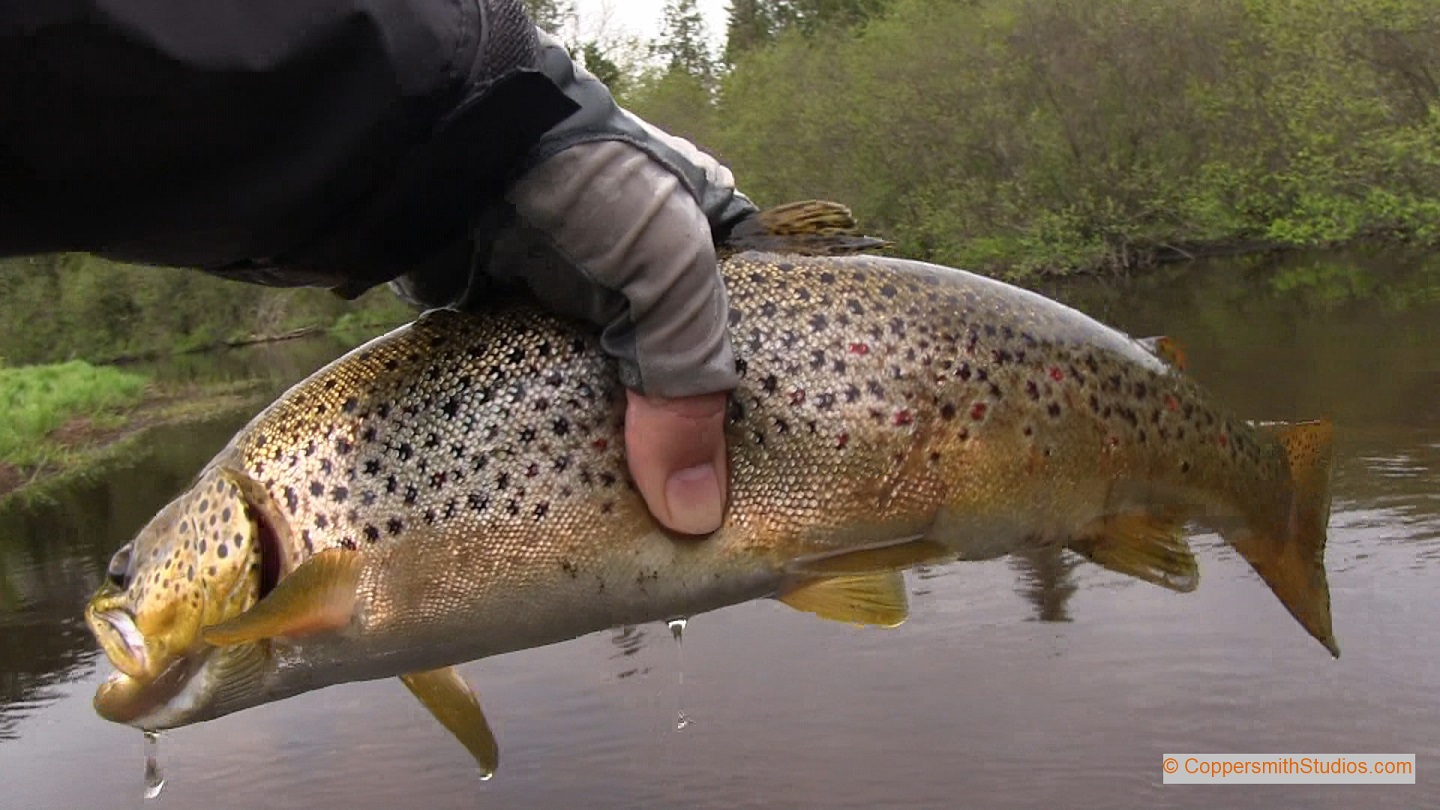 |
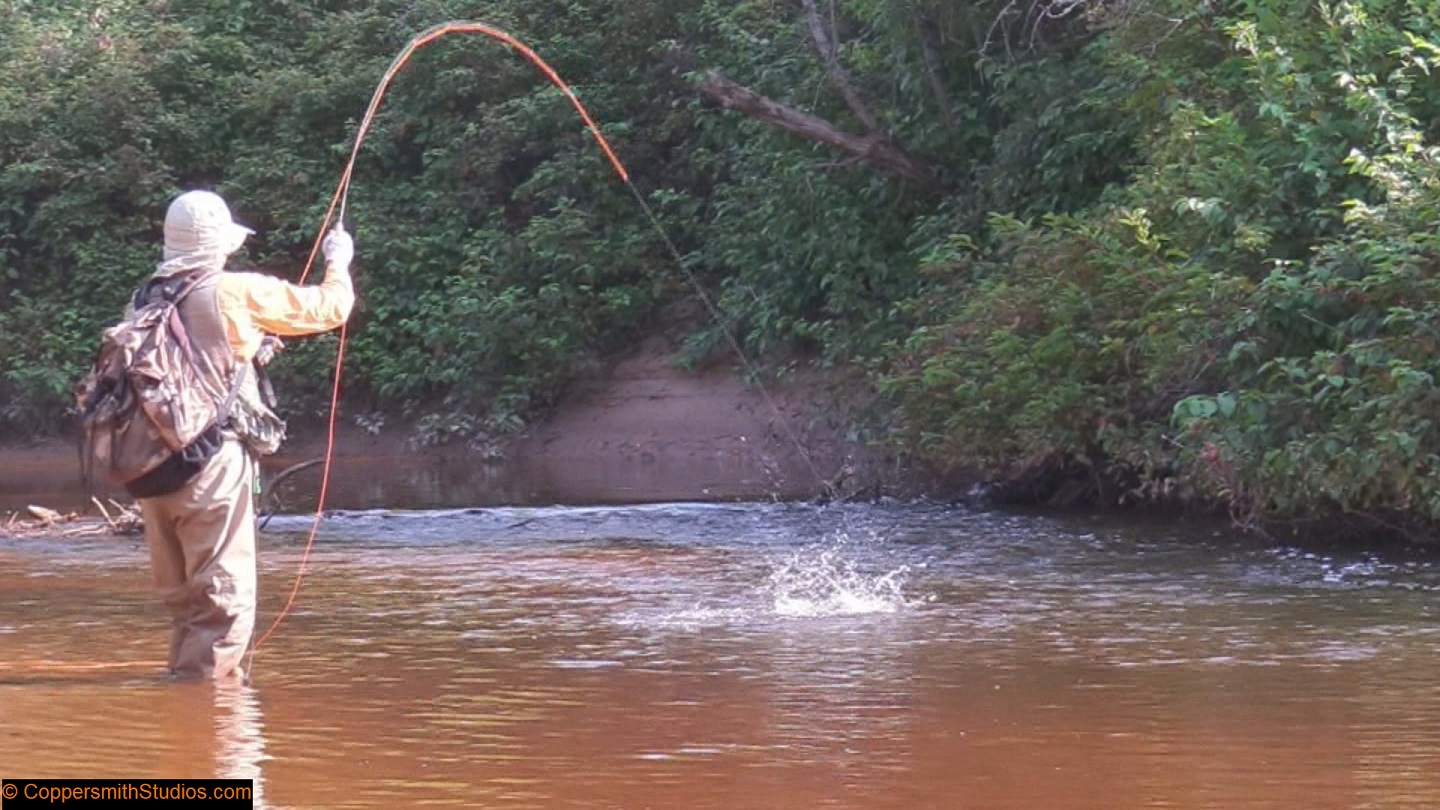 |
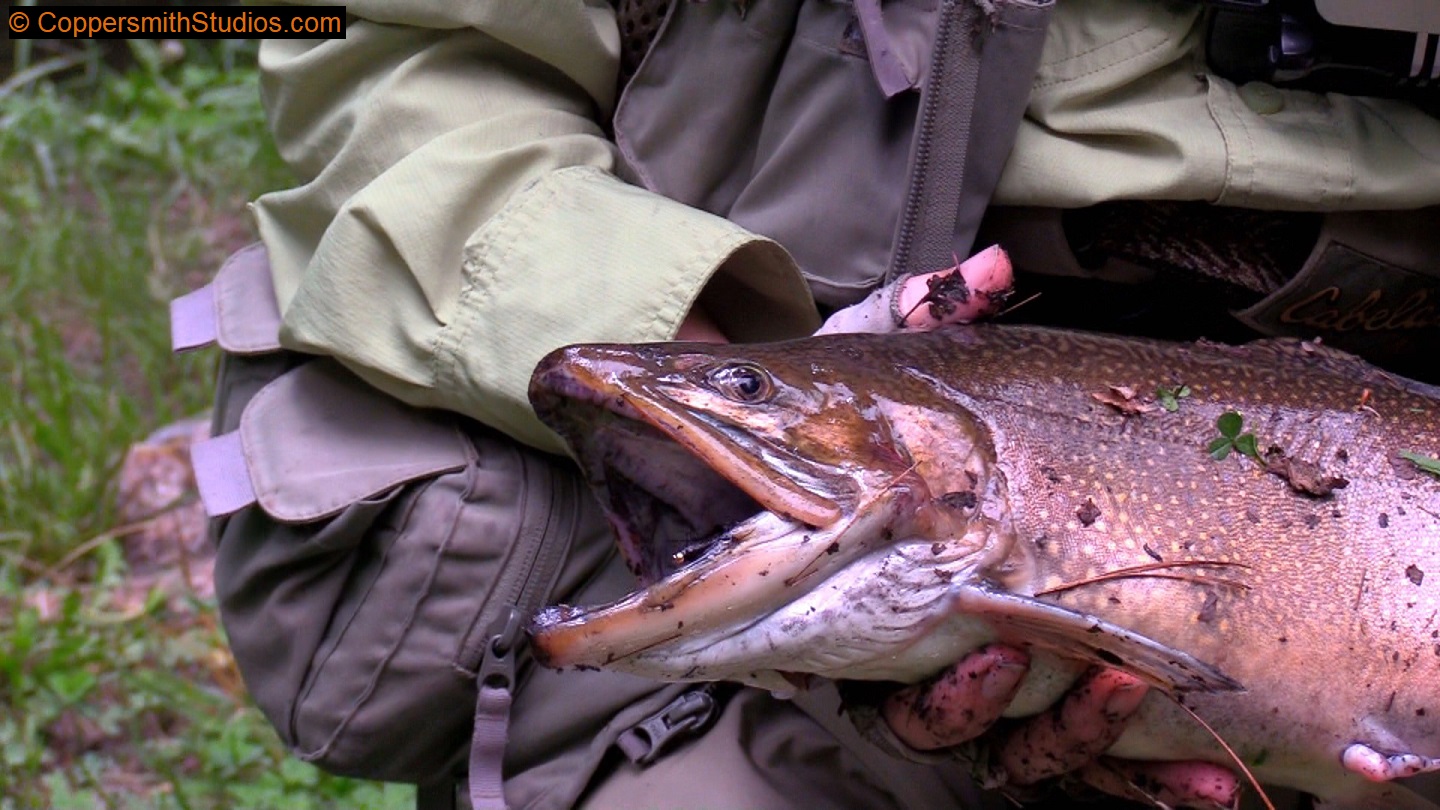 |
 |
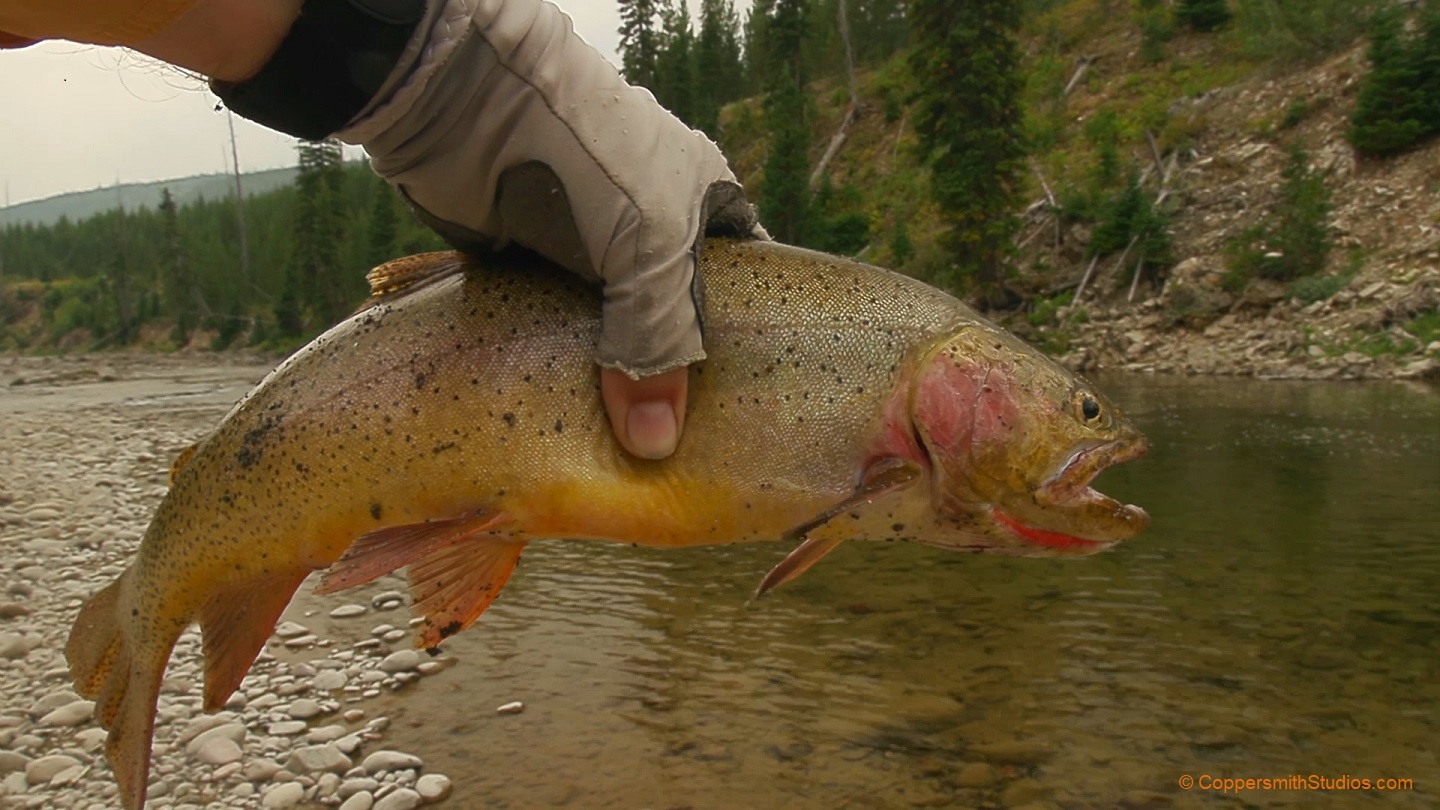 |
Stream via PATREON or CLICK BELOW TO PURCHASE.
DVD: How to Fly Fish with a Spinning Rod
DVD: Trout Streams of the Tetons
DVD: Trout Streams of Michigan, U.P. West
DVD: Trout Streams of North Carolina, West
DVD: Trout Streams of Virginia
DVD: Trout Streams of Southwest Wisconsin, North

Send Email to: CoppersmithStudios@gmail.com
Spin-Fly Rods for SPIN CASTING Anglers
In a world dominated by ambiguous testimonials it is sometimes difficult to get hard facts regarding the performance of fishing equipment. I therefore spent an entire day performing various performance tests and obtaining metrics on spin-fly rods in relation to their spinning rod counterpars.

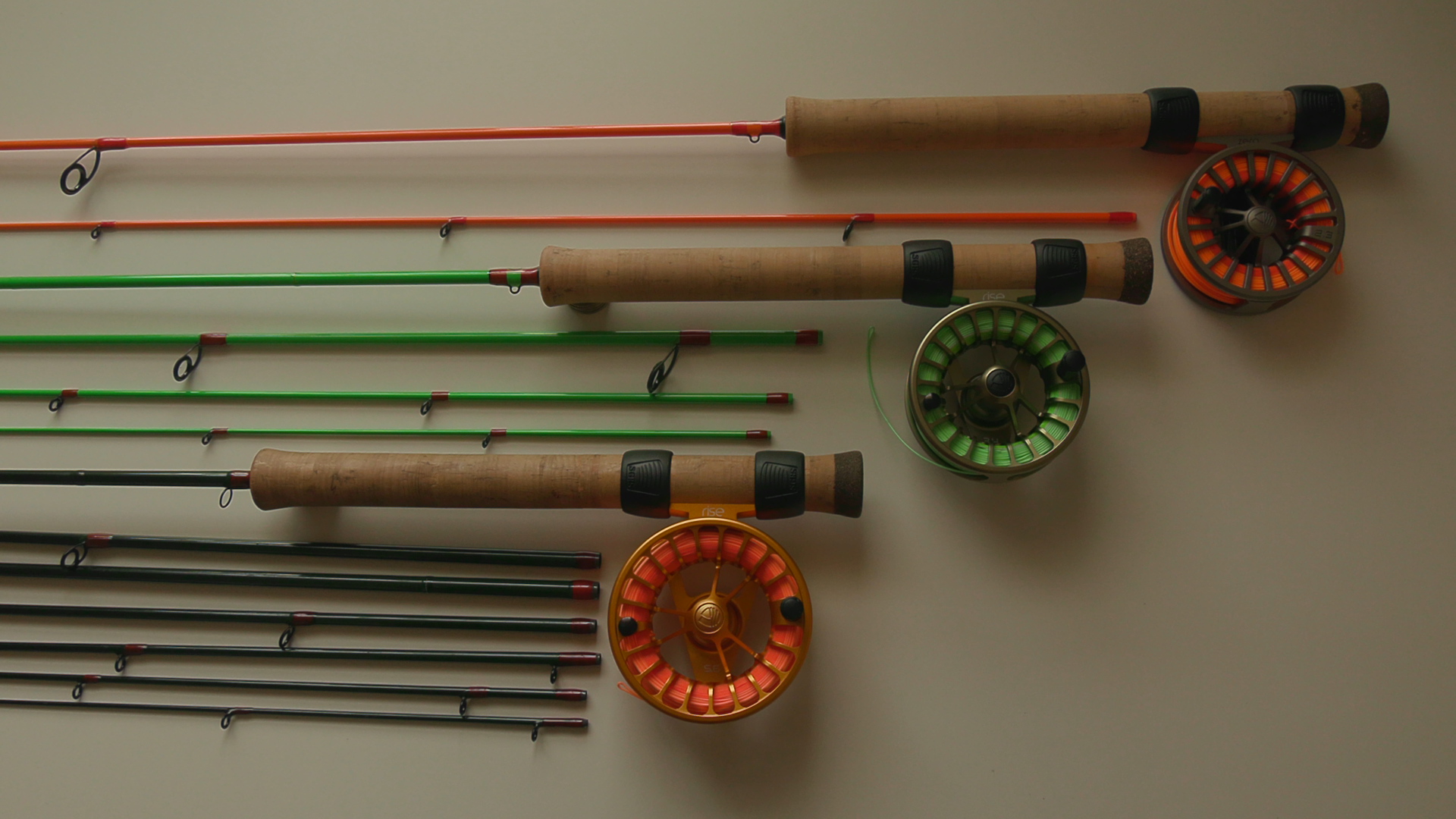 |
 |
| Spin-Fly rods rigged with fly reels. | Spin-Fly rods rigged with spinning reels. |
I performed a test comparing the distance and accuracy of casting a 1/16th or 1/8th oz lure between a spin-fly rod and the traditional spinning rod that it would replace. All distances are measured in feet and the value in parenthesis is the standard deviation. For accuracy a target was placed 27 feet away and the distance the lure landed away from the target was recorded. The casting stroke used was a one handed, right side cast. This is neither the optimal casting stroke for either distance nor accuracy but it is a common casting stroke and the one I use most often when I go fishing. An exception was made for the 9' 5wt spin-fly rod which required a 2 handed cast due to its larger weight.
The same ultralight spinning reel was used on all rods for all tests, a year 2000 Shimano Solstace. 10 pound braided Spider Wire line was used. This is the spinning reel and line I use most often when fishing with these rods. Winds were less than 5 mph.
In all test cases the spin-fly rods out performed their traditional spinning rod counter parts. For distance it is reasonable to expect this result because spin-fly rods tend to be longer and a longer rod generally produces a farther casting distance, so long as the relationship between lure weight and rod flexibility is not compromised. The improvement in accuracy came as a surprise. I believe the presence of the elastic bands with their superior grip resulted in better control over the rod, especially considering I was only using one hand in most of the test cases, and this resulted in better accuracy. Those bands certainly make it feel like you have more control over the rod. The cork handle on the spin-fly rods has a diameter of 1 inch. The spinning rods where the reel joins and where I tend to hold it while casting usually has a diameter of 5/8th inch. This smaller diameter handle seems to be harder to control. The fact that this part of a spinning rod handle tends to be made of slippery metal may also contribute to decreased casting accuracy.
One interesting observation involved comparing the distance achieved by the 4wt 7.5' fiberglass spin-fly rod verses the same type graphite model. The fiberglass rod could cast a 1/16th oz lure farther than the graphite, but the graphite rod could out cast the fiberglass for a heavier 1/8th oz lure. I believe this shows the strengths and limitations of fiberglass, that a slower action rod will cast lighter items farther but lacks the backbone strength of graphite for casting heavier items a maximum distance.
Created by: Dan Coppersmith 2023| www.CoppersmithStudios.com